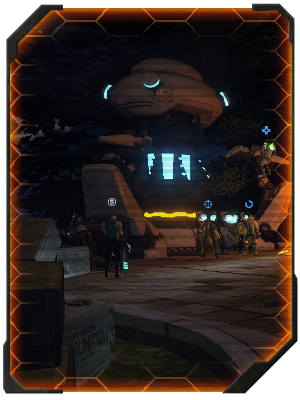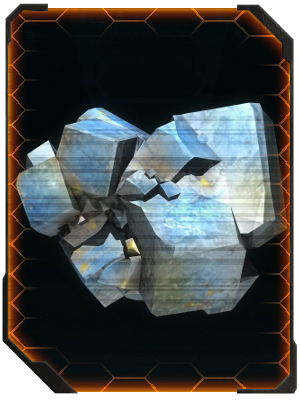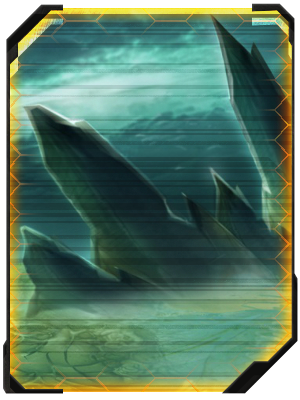
RAWR: Crafting Guide
If you have not yet used the crafting interface before it would be worth reading through the Crafting UI Guide as this will cover the basics of making your first items and finding your way around. In this guide we will also discuss the optional components available for some nanoprints, these can only be purchased from special crafting vendors at outposts with a power level of 2 or above. You can read more about outpost power levels in the Outposts and Progression Crafting guide.

RESEARCH AND TIME MANAGEMENT
When you first begin a character on Firefall you will only be offered a few Nanoprints. These are grouped into basic categories:
CONSUMABLES
Ammo calldowns, Medipacks, Flares and other single use items that are cheap to produce and frequently used.
CRAFTING COMPONENTS
There isn't much need to go directly into this menu, it contains all of the general components for items you can make. Nanoprints will have links directly to what you need in this category.
MISSION ITEMS
Nanoprints for the SIN keys to get into Antarctica, Sarggaso Sea and Diamondhead are stored here along with other quest specific items.
THUMPERS
This is where you will find all of your thumper nanoprints.
VEHICLES
Your LGV (Light-ground vehicle) nanoprint is stored here, eventually it will also contain vehicle parts too.
In addition to the Refine and Build tabs there is also a tab marked Research, this is used to unlock additional nanoprints. Running a research job not only requires Crystite(Cy) but also demands an extended length of time to process. Stage 4 items especially will take around 5 days to complete, during which time the workbench slot is unavailable. You can speed up the research times with Redbeans however the costs are quite significant. It is therefore wise to specialize in a specific area of crafting as this will allow you to progress further at a faster speed than trying to diversify. Battleframe gear is split into four stages which are linked to the constraint slots you can unlock:
- Stage I research = 5000cy
- Stage I research = 10'000cy
- Stage III research = 15'000cy
- Stage IV research = 25'000cy
All of these take varying time to complete, usually in exceess of an hour. It is often wise to leave these kinds of jobs running overnight while you are offline so they are done by the next time you log in. Since workbench slots are in short supply there is a fine balance you need to determine between researching new technology, refining resources and building new items. Typically it is best to have the longest jobs started before you log off, shorter jobs can be done while you are online or can come back to your computer to unload work benches and put something else processing. Thumpers and refining processes also require research to unlock the more advanced versions but cost varying amounts of Cy and time to complete.
REFINING RESOURCES
When you first gather resources they are normally in their raw state. As they are they cannot even be recognized by the crafting terminals, this is because they need to be refined. The refining process will yield an exact 1:1 ratio when using resources, depending upon the size of the stack you are refining the duration for this process can vary from a couple minutes to a couple hours. If you only intend to craft a few items right away it is better to only refine a small quantity of the whole stack if you are in a rush. During this process you also have a 0.1% chance per refined unit of finding a crystite seed. These are key components used for many of the recipes and cannot be obtained through any other means. In simple terms, for every 1000 resources you refine you will almost always get at least one crystite seed.
There are several refining methods and the only difference is how many different types of resources you can refine at any one time. One special form of refining is called Crystite Refining and is used to turn raw materials into the Crystite currency (Cy). This can be very useful if you find a high concentrating vien but it happens to be filled with poor quality resources since you can simply convert it into currency. The conversion rate is 2:1 and the quality of the material has no effect upon the yeild. This kind of process is very time consuming however and you will typically find that it is both faster and cheap to sell it on the market at 1cy per resource unit (RU).

UNDERSTANDING KEY PROPERTIES
Within Firefall crafting you will need to pay attention to more than just the quality of the resources being used. While this is an important indication for the total stats on the item you will find that different items being produced will use only a few of the properties each resource has.
This design follows on from needing to understand what resources have for their properties and which properties they tend to rank the highest in. This is known as their Affinity.
Working with a theoretical item let us consider the following:
Item A requires 500 units of any kind of Metal. However it will only use 1 property out of the 5 the Metals have, in this example it uses Conductivity.
Copper is known to have an affinity for Conductivity. By all fair reasoning you would presume that Copper would be the best resource. The crafting UI will display them in order of highest to lowest for Conductivity but there may be a resource you can purchase or mine that is better. It would therefore be wise to check the RAWR4Firefall's Live Resource Feed to see if there is anything better in the current resource shift before starting the building process for the item. Your first instinct may be to compare your Copper with the Copper in the current resource shift but it is entirely possible that the Copper currently available is lower for Conductivity than another resource such as Aluminimum, which doesn't have an affinity for Conductivity but does have a high cap for it, may offer you significantly better results than the Copper you currently have. This is where crafters need to be careful what resources they are using and keep a keen eye on what is happening in the Firefall's resource cycles.
It is foresight and knowledge that will allow the crafter to really gain a better control over the items they create rather than struggling to get the results they want. Preparation is key for best results.
OPTIONAL AND RARE COMPONENTS
Within many of the nanoprint recipes will be components that are optional. What this means is that you can create the item without them however certain perks or features will only be available if you include them when building the final product. These items are often linked to the constraint or durability systems and can be purchased from Crafting Vendors or randomly found as loot drops.
Crafting Vendors are not always available to players as it requires an outpost to have a minimum Power Level of 2 for them to appear. This can often mean that unless players decide to invest time into powering-up the towns and outposts you will not be able to obtain these optional components very easily. You can read more about this in our guide to Progression Crafting and Outpost Vendors.
The first type of optional component are called Reinforcements. These vary in quality and can also be found as loot drops from Chosen and humanoid mobs. What these do is increase the durability and repair pool for items they are added into. The main benefit is players do not have to worry so much about their gear breaking or suffering impaired functionality as easily. The vendor version will have costs for this component increasing depending upon how much it adds to the durability and repair pool.
Secondly you have the Subroutines which are extremely useful because they reduce the constraint costs of the item being created. These are highly valued since they allow players to carry high-quality gear that they simply wouldn't be able to equip without certain compromises on their load-out. Again these increase in their cost from the vendors depending on how much they reduce the constraints.
CRAFTING PHILOSOPHY
Nobody is able to tell you the best way to make anything in this game. Nobody. The reason for that is that the requirements for what is 'best' will vary from battleframe to battleframe, player to player and purpose to purpose.
To put this into perspective lets consider the Recon battleframes.
Now the Nighthawk and the Raptor can readily use either the Accord rifle or their various scoped sniper-rifles with high damage. However if these battleframes are caught at close quarters they will not find their sniper rifle that useful. But in a wide open area it is the weapon of choice. This may mean that the Recon needs to switch to their secondary weapon for interiors or simply use a version of their primary weapon that is capable of performing better at close quarters due to larger clip sizes or faster rates of fire. That alone reveals that you have strengths and weaknesses which you, as the crafter, can toy with to meet the needs of the user.
Many Recon players will focus on Power as their main constraint. This is because it governs their weapons and overall damage potential. However the question is, do they intend to use their secondary weapon much or would they want to throw their weight behind their sniper-rifle. You see a high-quality sniper-rifle can be very demanding and to balance the constraint costs they may need to equip a stock version of the SMG or Grenade launcher. So in that situation the 'best' SMG you could provide is actually the lowest and weakest one you can create. Now lets examine this 'weak' SMG a moment as a concept.
At Stage 1 crafting you do not have many options to tweak the SMG much. But as you progress you will find you can tweak many things. Since an SMG is best used as a supression-fire weapon it doesn't benefit much from raw damage per bullet, but it would be useful to have a large clipsize. When looking at the components an SMG requires you could therefore choose to put something with a slightly higher quality into clip size or rate of fire but use a really poor quality crystite seed module so that the damage per bullet is low. This can therefore be valuable to the sniper if they are swarmed by many weak enemies at once that their sniper-rifle is simply unsuited to dealing with. In turn this reduced effectiveness SMG is freeing up constraints for a really powerful sniper-rifle to use.
Again you can ask yourself, what features of this rifle are most valuable? A high rate of fire may be of little value since the user may want to put down the target on the first shot. If you craft it with a high rate of fire AND high damage per bullet you could have a really demanding weapon on your hands, one that may exceed the purpose is it being used for. You could lower those costs but having a slower rate of fire but high damage per bullet and turn a Quality 900 rifle into a Quality 750 rifle which will allow the user to equip better gear elsewhere.
Ultimately the point here is that with such powerful customisation comes the need to fully understand the systems you are working with. And a large part of that understanding is only going to come from practice and experience.

PREPERATION IS KEY
With most Firefall crafting being dependant upon the quality of resources and quality being dependant upon the purpose an item is being made for, it would be extremely wise for any dedicated crafter to keep a good stock of resources with a wide range of qualities. Don't simply keep the purple and blue grade available, also stock the white and green as well. If you see a Quality 1 resource don't simply dismiss it as useless, that resource could be used to utterly floor a feature on an ability or peice of gear that really isn't all that useful. Freeing up the constraints in ways not possible with a Quality 500+ resource.
Further to this you may want to also check RAWR4Firefall's Live Resource Feed to see what is available on the servers at the time. This will allow you to see if perhaps it would be worth gathering some fresh resources rather than settling for what you have at the time. Also check the market place frequently to see what is in demand, watch the trends to see if a resource you've been sitting on for weeks is suddenly wanted by players so you can sell it at a higher profit and perhaps purchase something you need when its supply exceeds the demand.
On top of the physical preperation it is going to be a good idea to personally experience different battleframes. Hands-on experience with how they work and their limitations and strengths will give you the kind of insight you need to make better items for them. It wouldn't really be possible to reliably create an item without any understanding of how it is going to be used.
Hopefully this guide has proved to be enough to help you to understand the Firefall crafting system in more detail. Also remember to download the following add-ons to help you to be the best crafter you can:
DITTO
This add-on allows you to access the Live Resource Feed from in-game, there is also a feature in the options which we strongly encourage users to enable as it will send any of your scanning results to us and help to maintain the Live Feed. Download it from here.
IRC Add-On / AeroChat
Should you ever need assistance in-game the members of the RAWR Corps and volunteers on this site user an IRC channel to stay in touch and provide support to players in need of help. Change the add-on to connect to irc.globalgamers.net #rawr4firefall to talk to us! Download it from here.